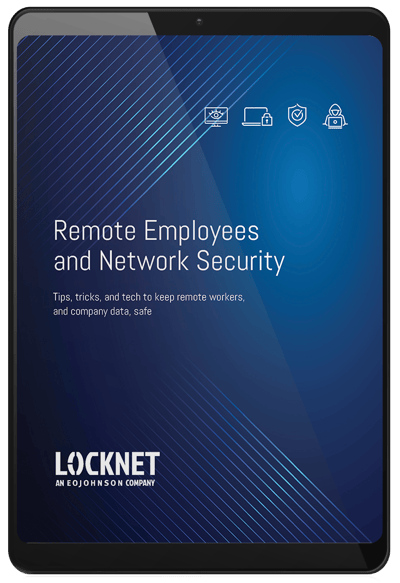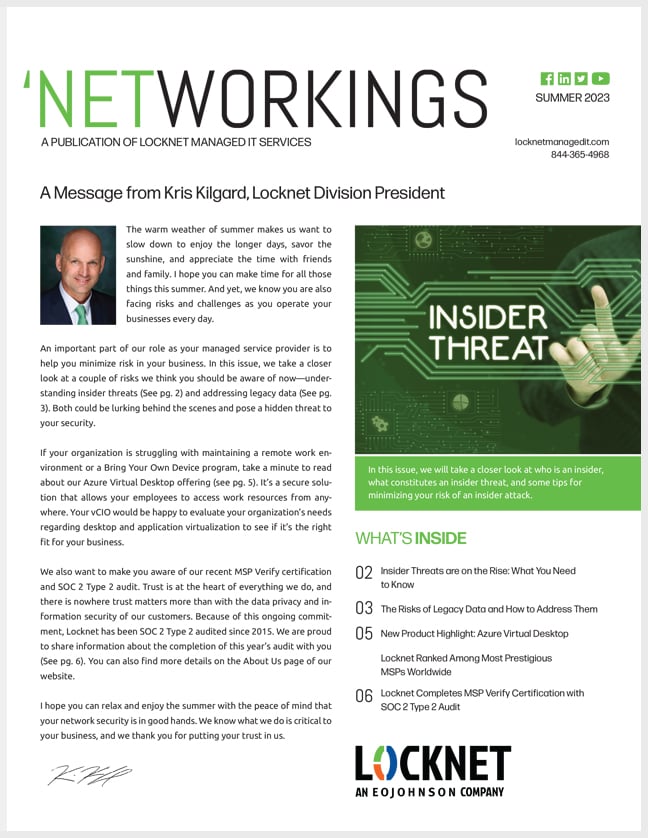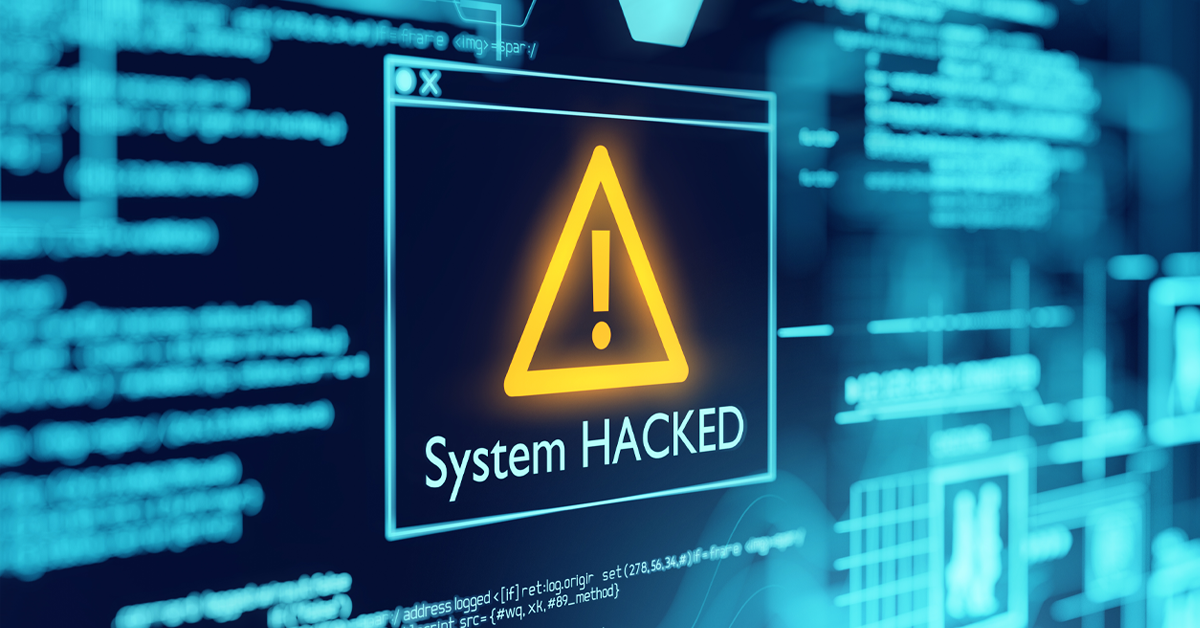Best Practices for network security and your remote employees
We've become a work-from-home nation, practically overnight—making remote work cyber security more important than ever before. But what are the risks to network security when your employees become a remote workforce? And what are the best practices for remote work security?
As our country has slowly moved toward embracing remote work opportunities over the years, this issue has always been held paramount. Because while remote working may protect us from spreading viruses during this coronavirus pandemic, it may put us at risk for other viruses—those which can infect our network, while making our businesses potentially vulnerable to hacks and other cybercrimes.
What are some of the biggest risks of having a remote workforce? "Trying to use non-approved technology, also known as rogue IT," says Leif Christianson, Director of Operations for Locknet Managed IT. But the risks don't stop there, and they include "employees storing documents in Dropbox, Google Drive, using personal email, video and chat," he explains.
The pitfalls, simply put, are many. And what's at risk is the safety and security of your company data and your client information. Overcoming these risk factors requires diligence, training, and the right IT partner for your small- to medium-sized business.
9 Best practices for remote working
The experts at Locknet Managed IT, part of EO Johnson Business Technologies, help protect businesses in Minnesota, Wisconsin, and Iowa from cybercriminals and shore up network vulnerabilities every day. Christianson offers these nine best practices for remote working.
- As a good practice, avoid using your personal computers and only use your organization’s computer for job functions.
- Organizations should continue to maintain policies that include password expiration, password complexity standards, and a requirement that passwords must be frequently changed. For more information, visit our blog “The Best Password Protection for Business.”
- Use only trusted Wi-Fi or hotspots and avoid open Wi-Fi networks.
- Utilize virtual private networks (VPNs).
- Require multifactor authentication to access VPN, Office365, and key systems.
- Keep system updates on schedule. This includes patching and anti-virus updates.
- Encrypt all devices that are used for work.
- Safeguard communications. For voice communications, encourage staff to always use a headset. For email communications, use encryption technology to protect sensitive communications. For online chat, discourage employees from conveying sensitive or private information. And for video, turn off or block the camera when not in use.
- Maintain physical security. Encourage staff to lock their computers when they step away. Make it a policy to log off each day and power off devices. And use a shredder for all printed documents.
Remote cybersecurity and protecting what matters most for your business
Another key tip from Christianson: take a layered approach to security. "There is no single software or technology that can safeguard against all cybersecurity threats," he explains.
There are many solutions you should consider--including restricting websites employees can visit while working away from the office. You will likely also want to consider a tool that can help improve end-point security for your employees who are working from home. "Use a cloud security platform that provides additional security on devices, if they are connected to the network or not," he says. He recommends Cisco Umbrella as an additional part of your overall technology security against cyber security threats.
Bottom line: protecting your company and client data can be complex. Having the right partner in navigating these changes is key.
If your organization, like so many, finds itself managing the productivity and security of a remote workforce, there's no need to go it alone. Remote work cyber security is just part of the services we provide to clients in Minnesota, Wisconsin, and Iowa every day. From putting the IT firepower you need into place, to providing training to staff about security awareness, and much more, we're honored to help companies navigate this new normal.
Contact us to learn more about how we can help you with your remote work security needs. Simply email support@eojohnson.com or call us at 877-408-1656.









